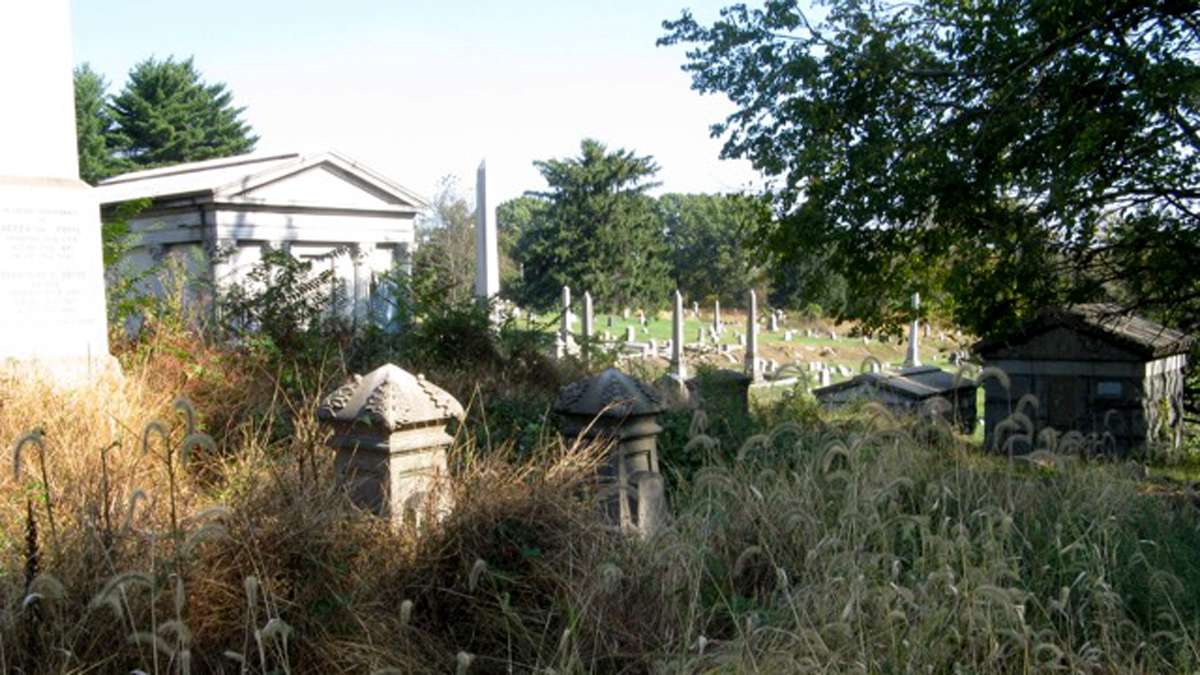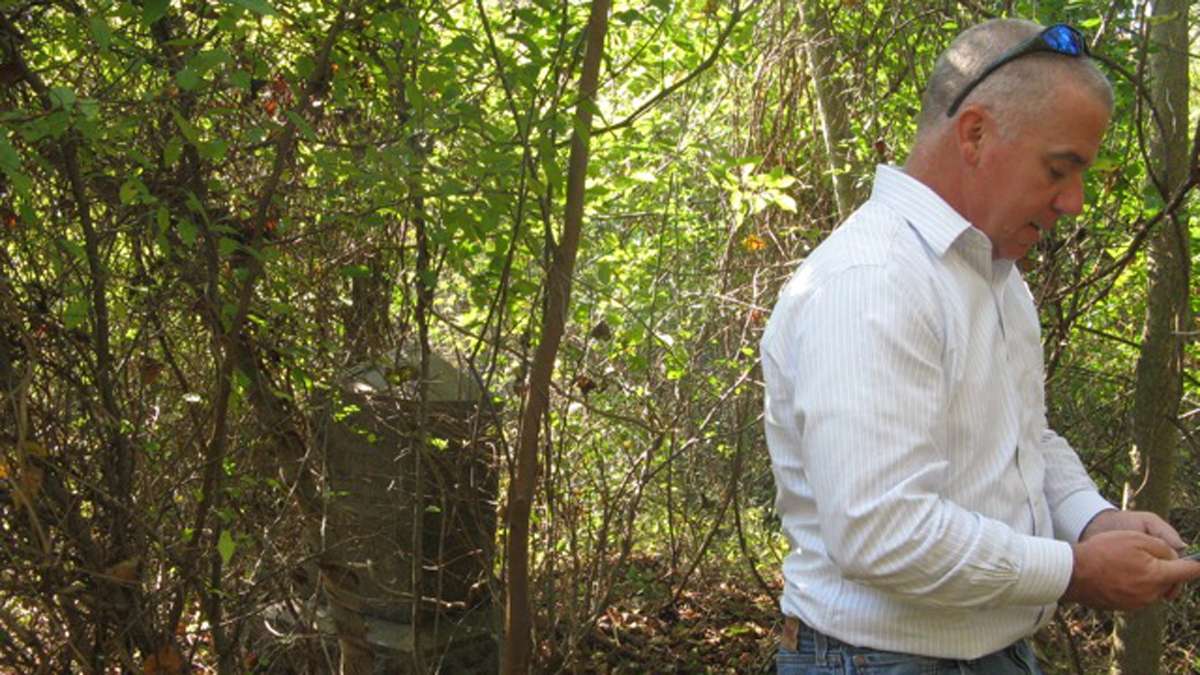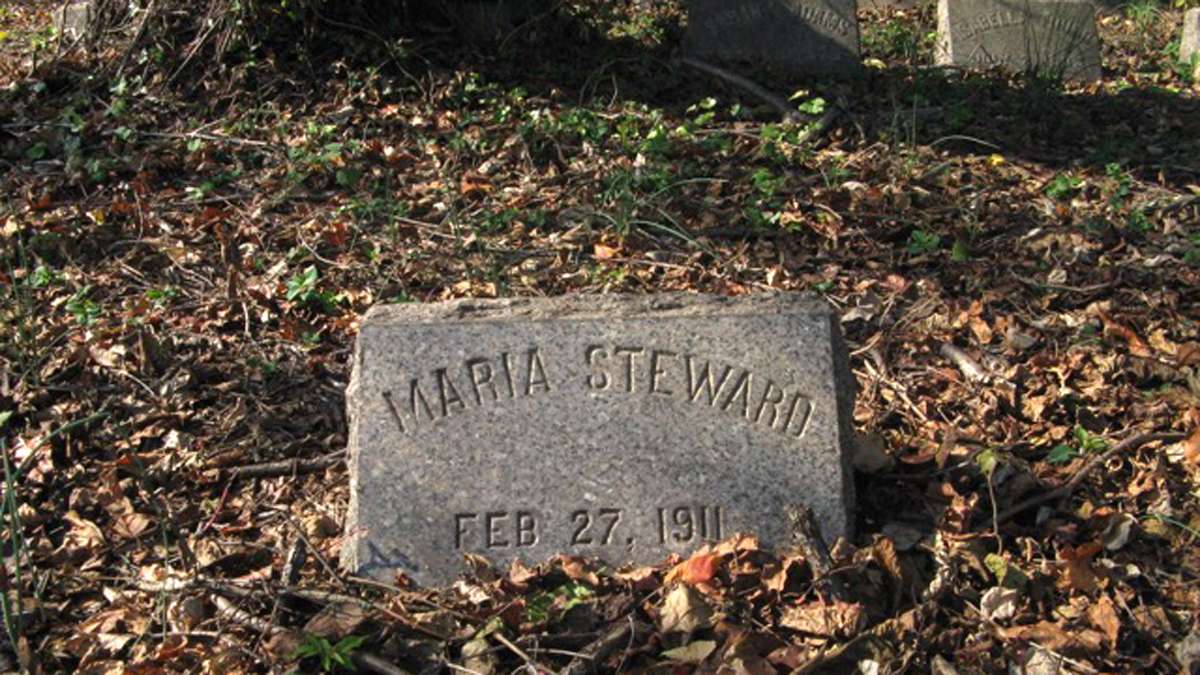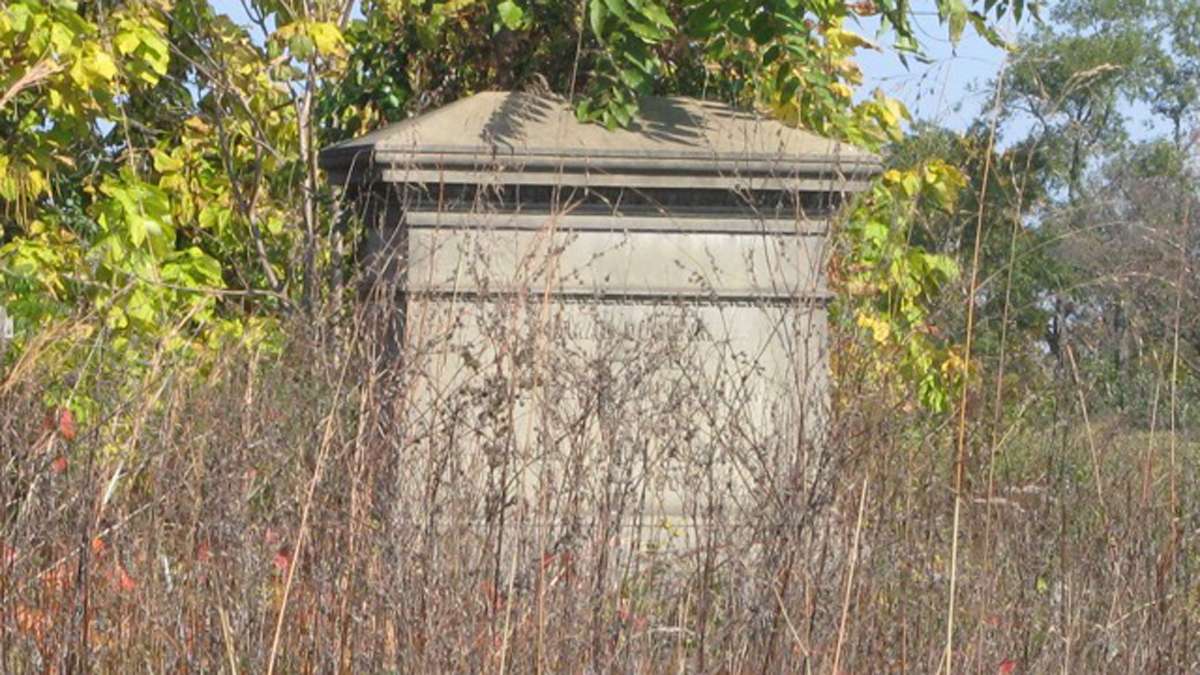The long road ahead to resurrect Mount Moriah
Mount Moriah is a ghost of a graveyard. The final resting place of Betsy Ross and more than 80,000 others, this cemetery is tucked between Philadelphia and Yeadon like a forgotten Victorian bookmark. At 200 acres, it is one of the largest nonsectarian cemeteries in Pennsylvania, and it is waiting to be rediscovered. But first, Mount Moriah will have to be freed from a cocoon of neglect. Fortunately, the cemetery, which will mark its 160th year in 2015, has determined friends.
Spanning Cobbs Creek, Mount Moriah is entombed in grasses, weeds, vines, branches, and invasive shrubs the size of trees. Thousands of headstones are engulfed by spongy soil, toppled by roots, or effaced by weather and time.
The site has been all but abandoned since 2004, when the last board member of the Mount Moriah Cemetery Association died. It isn’t clear how decades of perpetual care fees from families were spent, but little was left in Mount Moriah’s coffers by 2011, when it formally closed and burials ceased. Neglect that had begun in its last several decades of operation accelerated, along with desecration by vandals, trash dumpers, and even hunters.
A historic and diverse resting place
When Mount Moriah was established in 1855, cemeteries provided peaceful refreshment to the living while honoring the dead. Visitors came in carriages, strolled the lanes, and picnicked on neatly tended grounds. Mount Moriah was particularly scenic. The Romanesque gatehouse, which fronts Kingsessing Avenue, is on Philadelphia’s Register of Historic Places.
The cemetery contains the graveyards of several churches and organizations, as well as two national cemeteries maintained by the federal government. The 10-acre naval plot, the burial site for more than 2,400 officers and sailors, and an 11,000 square-foot area dedicated to soldiers, stand in stark contrast to the untamed areas. Veterans’ graves, though, can be found throughout the cemetery, representing service in every American conflict from the Revolutionary War to present day, including soldiers who served on both sides in the Civil War, and 20 Medal of Honor recipients.
Masons, Methodists and a Philadelphia mayor are buried at Mount Moriah, as are widows and orphans, Presbyterians and Episcopalians, senators and inventors, Baptists, Jews, and Catholics. All races, religions, and classes are represented.
Help arrives
From 2004 to 2011, Mount Moriah was totally abandoned. The cemetery’s legal situation was as impenetrable as the head-high grass. The association that controlled the property existed in name only. No other group had authority to step in, leaving everything to an understaffed, underfunded volunteer group, the Friends of Mount Moriah Cemetery, Inc., re-formed in 2011 by concerned relatives and neighbors.
Philadelphia and Yeadon, alerted to the worsening situation from news reports and citizen complaints, tried to find a solution, forming a working group and pursuing legal action. In 2012, the cities formed the Mount Moriah Cemetery Preservation Corporation, a seven-member board that includes Friends’ President Paulette Rhone and is led by Philadelphia Redevelopment Authority Executive Director Brian Abernathy.
In September, Philadelphia’s Orphans Court finally dissolved the old association and directed Mount Moriah Preservation Corporation to develop a rehabilitation plan by late next year. For the time being, legal control of Mount Moriah rests with the court.
Hope is rising that, with its legal status clarified, a managerial body in place, and a cohesive volunteer group, Mount Moriah will finally receive the assistance it so desperately needs.
It can’t happen too soon: There are numerous pressing issues, including stabilization of the historic gatehouse, which all agree will not survive another winter. Long-term questions involve determining the number of available graves, and when or whether to resume burials.
Difficulties on the ground
Over the last three years, the Friends have devoted much of their time to ground clearance and maintenance. In 2014, the group held numerous cleanup days that drew squads of first-time visitors from universities and community organizations. But that is a temporary solution at best.
Acquiring equipment for overgrown terrain is difficult, explains Ken Smith, Friends treasurer and environmental committee chair. Breakdowns are inevitable and time-consuming, and hitting a hidden marker with a mower feels, he says, “like a land mine. We purchased a zero-turn mower this year, but it spent more time on I-95 [being taken for repair] than it did on the ground.” Fueling equipment is costly, too — $4,500 in the first 10 months of 2014. Little wonder Smith hopes to rely more on contractors in the future. Fully maintaining Mount Moriah, however, could cost $500,000 a year.
Despite the difficulties, Smith estimates that 20 to 25 percent of the cemetery has been brought back to an acceptable appearance and is regularly maintained, an accomplishment that is best appreciated by visiting an untouched area.
Finding my great-grandparents
It’s easy to find a grave listing for Mount Moriah, provided the name and date of death are known. Late in 2013, 300 boxes of documents were removed to Philadelphia’s archives for safekeeping. The Friends have access to these materials, and maintain their own database as well. But getting to the grave itself is another matter.
Dr. Charles Tweedy, for example, came to section 153 looking for a grave and found a forest. Undaunted, he has returned several times, bringing with him a small tractor, stick saws, and weed whackers. Singlehandedly, he has cleared about half of the section, uncovering not only the grave of his wife’s grandmother, but rows of others belonging to indigent women, clustered around a memorial inscribed with “The Widows’ and Single Women’s Society.”
I, too, have relatives in section 153, Robert and Mary Armstrong, my great-grandparents, buried in the 1930s. On a recent Saturday I set out with a village of helpers — Rhone provided the location, Smith knew the way and had a truck to go where my car wouldn’t, and Tweedy left his tractor to join the expedition.
Smith, Tweedy and I walked to the edge of the uncleared portion of section 153 and peered in. The Armstrongs were in there somewhere. While I was satisfied just to be in their vicinity, my companions set off like Lewis and Clark, aided by a paper map and a smart phone. Calling out names from gravestones, they fixed their position and inched along, dodging branches and stepping over holes, fallen limbs and rocks. Thorny tendrils hung in all directions, and I walked right into most of them. Unhooking myself, I wondered whether Sacajawea had carried a machete.
To my surprise, it wasn’t long before my guides found a Civil War headstone, lying face to the sky, right where lot 199, my great-grandparents’ grave, should be. Robert Armstrong served with the Union Army. I leaned down to run my fingers over the long name that curved across the surface, trying to make out an A or an M or a G, but the lettering was too badly eroded. Even so, I believe we found the Armstrongs.
A few feet away, there was a grave from the 1960s, its stone toppled sideways. While perfectly legible, it was just as enmeshed as my great-grandparents’ stone, a reminder of how democratically and quickly nature took over Mount Moriah.
It will take years, and millions of dollars, and thousands of willing hands to restore Mount Moriah Cemetery, but the people who have seen it at its worst are not discouraged. “It took decades for Mount Moriah to get this way,” Smith says philosophically. “It will take decades to bring it back.”
The implication is that he has no doubt that it will happen.
WHYY is your source for fact-based, in-depth journalism and information. As a nonprofit organization, we rely on financial support from readers like you. Please give today.







